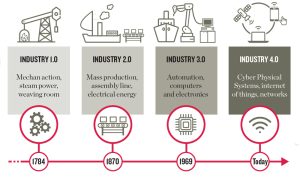The global shipping industry is undergoing a digital revolution, driven by technological advancements aimed at enhancing operational efficiency, safety, and environmental sustainability. The International Maritime Organization (IMO), as the leading regulatory authority for maritime affairs, plays a pivotal role in shaping the future of shipping through updated guidelines and frameworks. This article explores the IMO’s latest updates on shipping digitalization, including developments in e-navigation, cybersecurity, and blockchain integration, transforming maritime logistics and operations.

IMO’s Vision for Shipping Digitalization and Key Developments
The IMO envisions a connected, transparent, and efficient maritime ecosystem powered by digital technologies. Its Comprehensive Digitalization Strategy focuses on improving vessel operations, reducing administrative burdens, and enhancing decision-making through real-time data sharing.
Key Developments in Shipping Digitalization:
1. E-Navigation: Modernizing Maritime Operations
E-navigation encompasses the harmonized collection, integration, and exchange of maritime information to improve navigation safety and operational efficiency. Recognizing its potential, the IMO adopted the e-Navigation Strategy Implementation Plan (SIP), which outlines steps toward standardized digital navigation systems.
Core Aspects of E-Navigation:
- Integrated Navigation Systems: Use of advanced radar, GPS, and Automatic Identification Systems (AIS) for precise vessel tracking.
- Maritime Service Portfolios (MSPs): Providing navigational warnings, weather forecasts, and traffic updates.
- Digital Chart Display and Information Systems (ECDIS): Replacing traditional paper charts with digital navigation maps.
Case Study: The European Maritime Safety Agency (EMSA) implemented an e-navigation pilot project that reduced ship collisions by 25% through improved data exchange among vessels and port authorities.
2. Cybersecurity: Safeguarding the Digital Maritime Ecosystem
With increased digital connectivity, maritime operations are more vulnerable to cyberattacks. In response, the IMO introduced cybersecurity guidelines through the International Safety Management (ISM) Code, mandating that ship operators address cybersecurity risks in their safety management systems.
Key IMO Cybersecurity Guidelines:
- Risk Assessments: Identifying vulnerabilities in onboard and shore-based IT systems.
- Incident Response Plans: Developing protocols for managing cyber incidents.
- Crew Training: Ensuring seafarers are aware of cybersecurity threats and mitigation strategies.
Example: In 2020, a major shipping line experienced a cyberattack that disrupted cargo operations for several days. Following the incident, the company enhanced its cybersecurity protocols by aligning with IMO guidelines.
3. Blockchain Integration: Transforming Maritime Logistics
Blockchain technology offers secure, transparent, and tamper-proof records of shipping transactions. The IMO has acknowledged blockchain’s potential for streamlining maritime logistics, particularly in cargo tracking, customs clearance, and document management.
Applications of Blockchain in Shipping:
- Smart Contracts: Automating contractual agreements based on predefined conditions.
- Cargo Documentation: Digitizing bills of lading and certificates of origin to reduce administrative bottlenecks.
- Supply Chain Transparency: Enhancing cargo visibility from origin to destination.
Case Study: Maersk and IBM’s blockchain platform TradeLens has transformed global shipping by reducing processing times for cargo clearance by up to 40%, increasing efficiency and reducing operational costs.
–
IMO’s Digitalization-Driven Regulatory Frameworks
The IMO has implemented several digitalization-focused frameworks to standardize and accelerate maritime innovation:
- FAL Convention (Facilitation of International Maritime Traffic): Mandates electronic data interchange between ships and ports, minimizing paperwork and improving cargo clearance efficiency. The requirement under the Convention on Facilitation of International Maritime Traffic (FAL), requires Governments to use a single digital platform or “Maritime Single Window” to share and exchange information with ships when they call at ports, since 1 January 2024. This will streamline procedures to clear the arrival, stay and departure of ships and greatly enhance the efficiency of shipping worldwide. IMO Secretary-General said: “Digitalization is critical for greater efficiency in shipping. The Maritime Single Window delivers information between ships, ports and government agencies quickly, reliably and smoothly.”
- GISIS (Global Integrated Shipping Information System): Provides a centralized platform for maritime data sharing, facilitating transparency and regulatory compliance.
- IMO’s Maritime Single Window (MSW): Enables standardized data submission for port entry and customs clearance, reducing administrative delays.
–
Industry Impacts and Opportunities
Enhanced Operational Efficiency : Digital technologies optimize vessel routing, cargo management, and fleet monitoring, reducing fuel consumption and emissions. Real-time data sharing supports predictive maintenance and just-in-time arrival systems, minimizing port congestion.
Increased Safety and Security: Automation of critical ship functions reduces human error and enhances decision-making. Digital monitoring systems improve situational awareness, ensuring safer voyages.
Economic and Environmental Sustainability: Digitally driven shipping processes reduce operational costs and support the IMO’s emissions reduction targets under MARPOL Annex VI.
Example: The Port of Singapore’s Smart Port initiative leverages data analytics and automation to handle 37 million TEUs annually while reducing cargo handling times by 20%.
–
Challenges in Implementing Digitalization
Despite its advantages, digital transformation in shipping faces several challenges:
- High Initial Costs: Implementing digital systems involves substantial capital investment in infrastructure and technology upgrades.
- Data Standardization: Inconsistent data formats across ports and countries hinder seamless data exchange.
- Cybersecurity Risks: Expanding digital networks expose ships to cyberattacks, requiring robust security frameworks.
- Crew Training Needs: Shipping companies must invest in specialized training programs for crews to operate and maintain digital systems.
Credit: https://marine-offshore.bureauveritas.com/digital/maritime-industry-40
Future Prospects and Recommendations
Future prospects for maritime digitalization are promising, with the IMO’s continued leadership expected to drive the industry’s evolution. Advancing digital transformation will require expanding regulatory mandates for digital compliance, fostering partnerships between shipping companies, technology developers, and regulatory bodies, and supporting research and development in emerging technologies such as AI-powered decision-making, IoT-enabled asset monitoring, and autonomous navigation. Additionally, establishing global digital standards across the maritime sector is essential to facilitate international trade and logistics.
Digitalization is transforming maritime operations, enhancing efficiency, security, and sustainability. The IMO’s updated guidelines on e-navigation, cybersecurity, and blockchain integration provide a strong foundation for a connected and resilient maritime ecosystem. As the industry embraces these innovations, collaboration among regulators, shipping companies, and technology providers will be key to fully realizing the potential of digital shipping and ensuring a sustainable future for global maritime trade.



